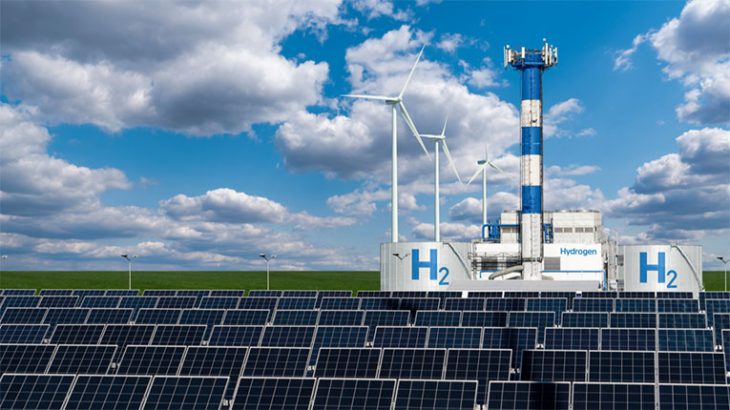Green hydrogen produced from renewable energy, as well as green fuels in general, are expected to play an increasing role for the decarbonization of the Romanian and overall European economy.
Hydrogen’s multiple potential uses as energy carrier or substitute for fossil fuels in agriculture, transport, or energy-intensive industry are well-known. Even though hydrogen is now expensive to produce, its price will likely move towards closing the gap with fossil fuels given the stabilization of European energy markets, technology development, and increased competition from imports. This would make hydrogen a more competitive, low-carbon energy source in the long run, provided supporting infrastructure becomes adequate. In addition, green and sustainable energy would contribute to regional security given the war in Ukraine, as well as provide an opportunity for the industry to cooperate in researching and developing new technologies. Such a discussion on hydrogen’s role in Romania took place during the Energy Week Black Sea conference held in Bucharest on February 6-8, 2024 which gathered investors, government and regulatory authorities, energy consumers and other interested parties.
As Romania is just starting to explore the place of hydrogen in its energy policy, with the draft Hydrogen Strategy in the final stages of preparation, the speakers provided at conference comparative insights on European prospects for hydrogen by 2050 in terms of policy, costs, demand, and priority sectors in which green hydrogen can be developed.
According to Ioannis Kalapodas, Head of the Bucharest office, European Energy Romania, even when the potential for hydrogen remains largely unexplored, Romania should increase its ambitions in the future, looking also at best practice examples from other EU countries.
In the course of the discussion, Ioannis Kalapodas, presented two such projects being developed and now under final construction stage by the European Energy in Denmark. The first is a large scale production of green e-methanol plant Kasso, which will use electricity from its solar power park of the capacity 300 MW. Solar park is the largest in Northern Europe, and e-methanol that will be produced from it serves large clients such as Maersk, the Lego Group, Novo Nordisk.
The second, smaller-scale project, is a green hydrogen production plant which will use the electricity from its wind park Made to supply hydrogen locally to “green” the Esbjerg port. When producing green hydrogen, a large of amount of heat is generated. Instead of letting this go to waste, the excess heat will be fed into the local district heating network of Esbjerg for 200 households in the start-up phase, thus demonstrating how to combine the power, fuel, and heating sector in the same project.
Experts during the conference noted that to qualify as “green”, hydrogen production must not increase emissions elsewhere. Recognizing that a large share of hydrogen consumed in the EU would still have to be imported to keep the pace with the demand, the reduction of the carbon footprint for imported hydrogen would be achieved by pricing carbon emissions at EU’s borders.
Dr. Evangelos Gazis, Head of SEE, Aurora Energy Research pointed out that the availability of significant EU grant funding for decarbonization in Romania, from the Modernization Fund to the Recovery and Resilience Facility, could accelerate investments and pilot projects in hydrogen. High load onshore wind and solar energy plants would contribute to massive cost savings by 2050 for co-located production, taking into account that now Romania still has some of the most expensive retail power prices for baseload.
Speakers emphasized that the EU Delegated Acts define renewable hydrogen based on three criteria: additionality, meaning that for green hydrogen must be additional, newly-built renewable energy capacity; geographical correlation, meaning that power source and H2 production must be in the same bidding zone or neighbouring ones; and temporal correlation, matching the time of power generation and hydrogen production.
The joint point of the speakers in the panel discussion was that projects where renewable generation is closely “coupled” territorially with hydrogen production, whether connected to the power grid or not, have promising potential to become viable. However in Romania there is currently no specific legal framework tailored for the emergence of Power-to-X – technologies that turn surplus renewable electricity into carbon-neutral fuels. A clear road map, specifying regulatory roles, the concrete plans to develop the required physical infrastructure, as well as incentives, would enable Power-to-X businesses to develop long term, sustainable investment plans and kick off the market entry for clean fuels. Equally importantly, a favorable investment climate in Romania would be essential, meaning less bureaucracy and faster permitting procedures, a framework to conclude long-term off-take agreements, and financial instruments for risk sharing. Once all pieces of the puzzle are in place, renewable e-methanol and hydrogen could become more price competitive comparing with the fossil energy prices making the transition to green fuel consumption by heavy industry and transportation faster.
